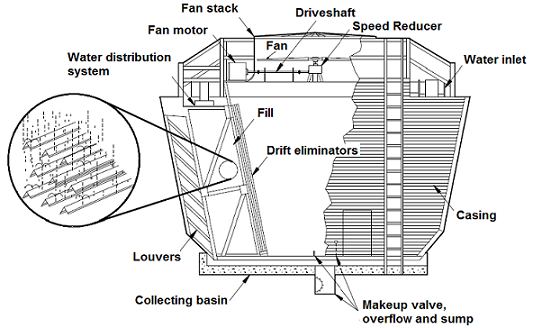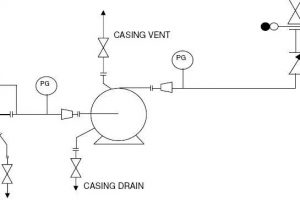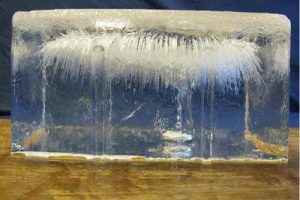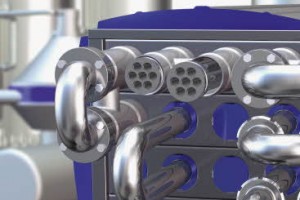Before the use of cooling towers, rivers, lakes, or other cooling water supplies were required in order to meet cooling needs of power plants.
Cooling towers help reduce the thermal pollution of the natural water heat sinks, since hot water is not dumped at rivers, lakes or other water reservoirs. Use of cooling towers also allows the reuse of circulating cooling water.
How Cooling Towers Work
Cooling of the water is achieved through direct contact of water with air. The air vaporizes a part of this water and cooling effect is provided primarily by an exchange of latent heat of vaporization resulting from evaporation of water. During this phenomenon, which is widely known as evaporative cooling, heat is transferred from water to air. This heat is then rejected to the atmosphere, either through the use of fans or natural convection.
Types of cooling towers
In brief, there are three (3) major types of cooling towers:
- Induced draft cooling towers.
- Forced draft cooling towers.
- Natural convection cooling towers.
Induced Draft Cooling Towers
At induced draft cooling towers, the incoming cooling water is injected throughout the cooling tower with a spray distribution header. The spray is directed downards to baffles for maximizing the time of contact of water with air. Maximizing of heat exchange surface area is accomplished through the 'cooling water fill', made of PVC, wood, metal or other material. Air enters the interior of cooling tower through properly designed 'louvers'. Air is drawn through the baffled area by big fans and causes the cooling of water. In order to avoid the entrapment of water droplets in the leaving air stream, special device called 'drift eliminators' are used.
Figure 1 - Induced draft type cooling tower
Forced Draft Cooling Towers
Forced draft cooling towers are very similar to induced draft cooling towers. The basic difference is that in forced draft cooling towers, the air is blown from the bottom of the cooling tower. Their use is limited due to water distribution problems and recirculation difficulties.
Natural Convection Cooling Towers
In a natural convection cooling tower, air enters the shell of the tower through 'louvers'. Water is typically sprayed around the periphery of the cooling tower and cascades to the bottom. As the air inside the tower is heated, it becomes lighter and starts rising through the tower. This process draws more air in the bottom of tower from outside, creating a continuous natural air flow. Continuous air circulation is accomplished due to the density difference between the warmer air inside and the cooler air outside.
Natural convection cooling towers have a much bigger footprint compared to forced draft cooling towers and also cost much more to build. Due to these reasons, natural convection cooling towers are built less frequently compared to other types.
Figure 2 - Typical natural convection cooling tower






